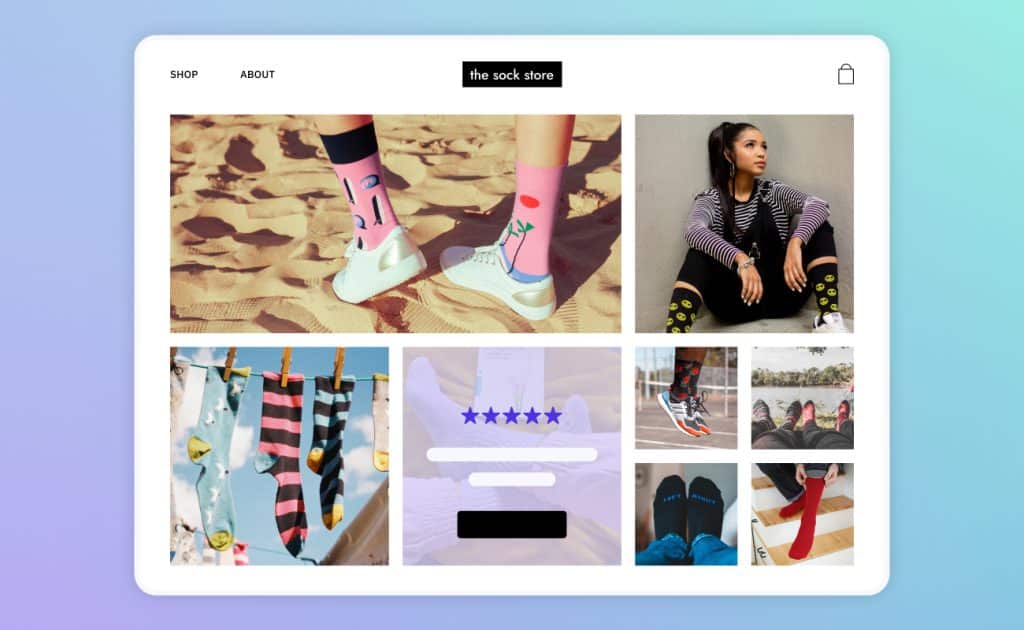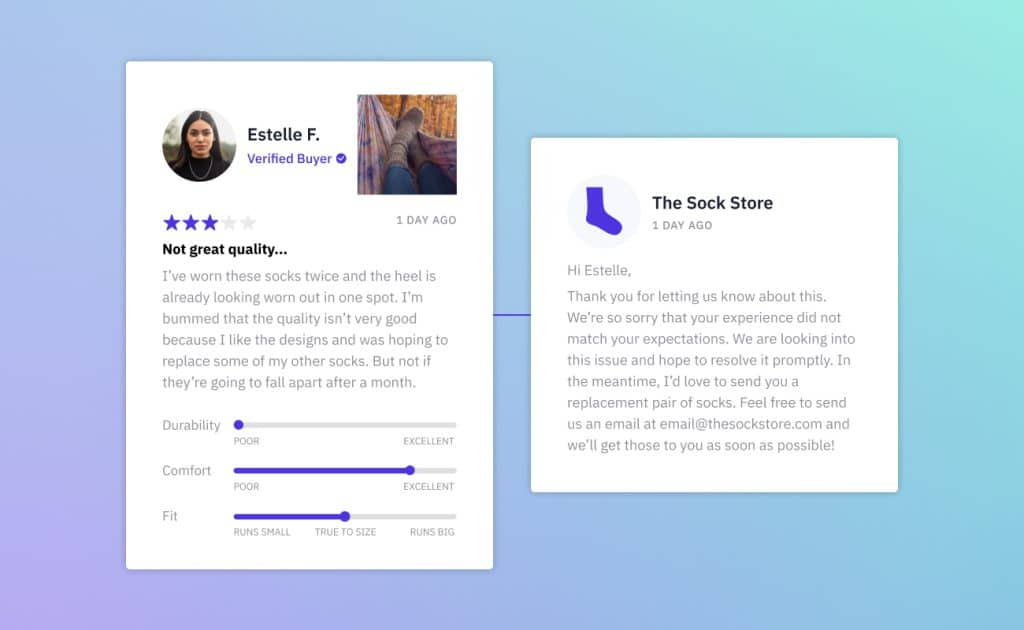Quality vs. Quantity: Why High-Quality Customer Reviews Matter in Ecommerce

If you’ve been keeping tabs on our blog, you know how passionate we are about customer reviews and their incredible value for ecommerce brands. It’s something we write about often, as we look to increase our readers’ understanding of reviews, user-generated content (UGC), and the importance of gathering zero-party data (ZPD) in this increasingly privacy-centric landscape.
In doing so, we’ve given you tips on how to generate more reviews, and how to use them to drive sales and increase conversion rates. But it’s important to remember that reviews aren’t just a numbers game. Their quality is just as important as their quantity, as the more detailed a review is, the more information you can leverage to improve various aspects of your business.
But what makes a high-quality review? At Okendo, we believe high-quality reviews showcase descriptive, rich content and include a star rating, product or customer attributes, and come from a verified buyer.

Of course, not every review is going to match these criteria. Some may only feature a couple of these characteristics. When they do, that’s what we call a “decent” review. Or, they may be incredibly vague and of little use to prospective customers looking for social proof before making a purchase. We call these “bad” reviews.
Note how “bad” reviews and “negative” reviews are two entirely different things! In fact, not all negative reviews are bad. But more on that later.
What to Do When Reviews Don’t Adhere to the Same Quality
As an ecommerce brand, you naturally want your customers to love you. Indeed, there’s an immediate thrill when you see a shopper communicate their affection for your product or service through a review. But these reviews can sometimes be problematic, even when their intent is positive.
For example, a one-worded review that says something like “amazing” or “loved” does little for your brand. This is because it doesn’t tell prospective customers anything meaningful about your product, the experience, or why it’s worth buying. So even though it was written by a happy customer, it won’t necessarily build shopper trust or confidence, or contribute to conversions.
So what should we do if vague or one-worded reviews outnumber the more desirable, high-quality ones? First of all, don’t fret! There are still ways you can amplify high-quality reviews to increase conversion and sales throughout the buyer’s journey, even if they’re not as plentiful. Here are just some of the ways to get more out of the quality reviews that you have:
- Group Your Reviews: Okendo’s grouping feature allows you to display reviews from multiple products on a single product page. This is especially important for brands dealing with variants or bundles. For example, if you are an apparel brand selling a shirt in multiple colors, this would enable you to bundle the reviews you’ve received for the red, green, and yellow versions of the shirt so that each one displays. Alternatively, you can group reviews from individual SKUs within a bundle on the bundle product detail page.
- Media galleries. Showcase visual UGC in beautiful media galleries throughout the online buying journey to drive product discovery, engage shoppers, and increase pre-purchase confidence.

- Syndicate your reviews to other platforms: Syndicate your high-quality reviews to other marketplaces, including:
- Google: Once you have a product feed uploaded to Google Merchant Center, we recommend also connecting a reviews feed so your product listings can be augmented with review data. This will help you capture more search traffic and build trust with consumers at the beginning of their buyer’s journey. Learn more about how to sync star ratings to Google Shopping ads and check out this refresher on creating high performing Google shopping ads.
- Meta (Facebook + Instagram shops): Our Meta integration was built so brands can stay worry-free with a guaranteed product-to-review match. As customers leave product ratings and reviews on your website, we automatically send a review feed to Meta so that your product listings on Shops on Facebook and Instagram are always displaying the most up-to-date and relevant customer content. Here’s how to take advantage of this integration.
- Syndicate internationally: If you’re an international brand with multiple storefronts, you can syndicate your high-quality reviews across product pages and across locations. This helps you increase the impact of those reviews and help you build credibility if you’re expanding into new markets.
What Happens When You Receive a Negative Review?
Believe it or not, it isn’t always a bad thing to receive a negative review. As Katie Baligod, Director of User Experience at ecommerce-focused digital agency, Tomorrow, points out, “It might seem counterintuitive to include a mix of positive and negative reviews, but a lack of critical feedback will make users question whether your reviews are legitimate the same way a 5.0 star rating can look to good to be true.”
Sure, the likelihood that someone will make a purchase is at its peak when a product’s average star rating is between 4.2 and 4.5. Publishing negative reviews can actually help your brand’s trust and authenticity – not to mention provide powerful service recovery opportunities – all of which benefit your brand greatly.
By dedicating some time to thoughtfully respond to negative reviews, you can showcase your brand’s transparency, diligence in customer service, and dedication to learning more about your customers on a more personal level. In turn, this can help you build stronger trust with your customers as it shows that you not only listen to their feedback but that you care about their individualized experiences.

This is, after all, the reason why we seek reviews in the first place. As our recent research illustrates, reviews have become more vital than ever as brands look for ways to grease the purchase funnel and drive additional revenue in this ultra-competitive landscape. In fact, nearly all customers (97%) admit to looking for reviews at least some of the time before making a purchase. This includes 44% who noted they do so “most” of the time and 34% who said they do so “every” time.
Further demonstrating the impact that reviews have on trust and authenticity is the fact that 90% of consumers believe that reviews from real customers are more impactful than reviews from influencers.
Leveraging High-Quality Reviews to Boost Trust and Sales
Trust is the currency that transforms interactions between an ecommerce brand and a customer into a bonafide relationship. It’s only when a brand establishes this trust that they earn the right to learn more about its customers on a much deeper level.
This is why high-quality reviews matter as much as they do in ecommerce. They are the ultimate drivers of trust, authenticity, and social proof. All of which have the power to increase conversions and multiply your brand’s sales.
So even if your catalog of customer reviews includes just a few high-quality ones, it’s imperative that you showcase them across your storefront and across platforms. It’s like a chainsaw piercing through wood. These types of user-generated content are an incredibly powerful tool for cutting through the noise in this increasingly competitive market.